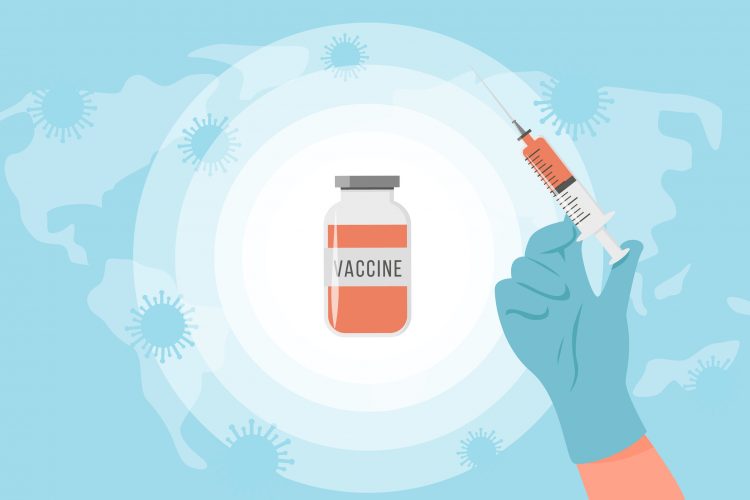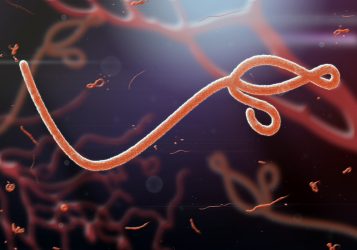The future of vaccine research and learning the lessons of COVID-19
Posted: 28 April 2022 | Dr Owen Seddon (University Hospital of Wales) | No comments yet
Dr Owen Seddon, Consultant in Infectious Diseases and Medical Microbiology at University Hospital of Wales, explains how successes in the development of the coronavirus vaccine must be used in the fight against other vaccine preventable disease.


The global effort to produce a vaccine for COVID-19 has rightly been lauded as one of the greatest scientific achievements of the past century.
The sheer speed at which the process moved from producing the first viral genetic sequence to global rollout of effective vaccines was all the more impressive when remembering that the fastest any vaccine had previously been developed was around four years, for mumps in the 1960s, and most vaccine production timescales had been a decade or more.1
A number of factors – including a wealth of funding, regulatory flexibility, and scientific expertise – were on our side, which is unsurprising given the matter that needed addressing was the worst global health crisis for a generation.
While we should rightly applaud this endeavour, it is important that this moment is not just seen as a one-off achievement, but as a genuine breakthrough in the R&D of vaccines for the future.
Through a combination of the lessons that have been learned and a new global focus on the threat of infectious diseases, the international scientific community now has the opportunity to promote a new appreciation of vaccination as a powerful weapon in the public health armoury.
An opportunity taken, after many missed
Contrast the COVID-19 Pandemic with the 2014/15 Ebola outbreak in West Africa. Ebola vaccination research had been ongoing for over a decade prior to the outbreak, but an effective vaccine could not be deployed until over a year had passed and 11,000 lives were lost.2


This prompted the creation of The Coalition for Epidemic Preparedness Innovations (CEPI) at Davos in 2017 to attempt a co-ordinated, international and intergovernmental plan to develop and deploy new vaccines.
CEPI was an example of the increased profile vaccine science had begun to enjoy even pre-COVID, with key achievements in unlocking the potential of messenger RNA (mRNA) vaccines, for example, having occurred in the years prior to the pandemic3 and research into the Middle Eastern Respiratory Syndrome coronavirus (MERS-CoV) allowing scientists a “head start” on tackling a novel coronavirus like Severe Acute Respiratory Syndrome coronavirus 2 (SARS-CoV-2; the cause of COVID-19).
Looking to the future, vaccine development needs to be directed at the triple infectious disease threats of the coming years. These include infectious diseases with epidemic or pandemic potential, including influenza and coronaviruses, high consequence infectious diseases with high mortality including the viral haemorrhagic fevers, and perhaps most importantly the threat of antimicrobial resistance (AMR), predicted to lead to 10 million deaths by 2050.4
The World Health Organization (WHO) action plan stresses the importance of vaccination as a key action in the fight against AMR, through its ability to target both infectious diseases requiring antimicrobials and respiratory viral infections, which are often inappropriately treated with antibiotics – and which can also give rise to secondary infections that require antibiotic treatment.4
Barriers removed
Prior to COVID-19, vaccine development faced a key barrier from pharmaceutical industry funding. Long, arduous development with a high chance of failure and limited perceived profitability led to reluctance from the private sector to fund research into vaccine candidates.
But during COVID-19 we saw a huge public sector and philanthropic investment in vaccine research, reducing the financial risk to pharmaceutical companies and enabling their involvement.
It is a misconception that it was only the removal of regulatory barriers which allowed the development of the COVID-19 vaccines to occur at such pace”
From the other perspective, the pharmaceutical industry was able to give the public sector their expertise in running efficacy trials and scaling up manufacturing, and multiple agency involvement meant that multiple candidate vaccines could be developed in parallel, increasing the chances of success.
It is unrealistic, perhaps, to think that this scale of development can be replicated in the face of what are perceived to be “lesser threats”, but here we have a responsibility as the scientific community to exert pressure on governments and industry to recognise that less dramatic dangers than COVID-19 are still worthy of attention and that preventative efforts against the diseases already listed are of self-evident economic benefit.
It has been well publicised that emergency regulatory mechanisms were used to tremendous effect to speed up the COVID-19 vaccine development process,5 without compromising on the scrutiny the vaccine candidates faced in their regulatory review. These processes were based on emergency use and, like the financial aspects discussed earlier, may therefore be seen as inappropriate in the face of less extreme circumstances.
However, neither is a return to pre-COVID mechanisms appropriate. Vaccine research must be prioritised for scrutiny by ethics panels, regulators and reviewers in order to ensure the process is as streamlined as possible outside of emergency conditions.
Vaccines do not equal vaccination
It is also important that the congratulatory atmosphere around the vaccine rollout does not shroud the problems that were encountered. Producing a vaccine means nothing if it does not result in a successful vaccination of an individual.


Whilst the previous record for vaccine development was four years, the previous record for achieving 40 percent vaccine coverage was a staggering 14 years.6 Vaccine rollout in the lowest income countries was appallingly slow and at the point 60 percent were fully immunised in OECD (Organisation for Economic Co-operation and Development) countries, only 6.4 percent of the population in sub-Saharan Africa had been fully vaccinated.7
Thus future efforts in vaccination must focus not just on development, but also the logistics of vaccine rollout, as well as vaccine equity regardless of socioeconomic status. Infectious diseases do not respect borders and so the burden is disproportionately shared.
Apart from the moral duty to ensure access to vaccines for the poorest, there is an economic incentive in preventing the poorest nations from being left behind. There is also benefit to all in stopping the development of AMR, which exploits key drivers found in low- and middle-income countries (LMICs) to develop, but then may then become a threat to all nations regardless of its country of origin.
Lastly, vaccine hesitancy must be addressed. Accelerated timescales for development were accompanied by strong public health messages about the safety of the vaccines, but this did not prevent misinformation and vaccine hesitancy being rife amongst the population. Ongoing public health information campaigns, education and engagement with hard-to-reach communities is paramount in turning an effective vaccine into and effective vaccination.
Conclusion
It is a misconception that it was only the removal of regulatory barriers which allowed the development of the COVID-19 vaccines to occur at such pace, and the use of emergency regulatory powers may not be appropriate for less extreme, but none the less important threats.
Striking the balance of public/private funding, working on multiple targets in parallel, as well as increasing the speed of key steps in the approval process are all vital lessons to take into future vaccine research. Learning the lessons of vaccine delivery and resisting vaccine nationalism, to ensure an effective vaccine is turned into an effective vaccination, is also critical.
These lessons must be learned as the threats from infectious diseases and AMR have never been more prominent in public discourse and represent a huge opportunity to advance the cause of vaccine preventable disease.
About the author
Dr Owen Seddon is Programme Leader for the Infectious Diseases MSc at postgraduate education provider Learna, as well as a Consultant in Infectious Diseases and Medical Microbiology for Public Health Wales, based at the University Hospital of Wales, Cardiff.
Having trained in both Wales and New Zealand, Dr Seddon contributes to a busy clinical infection service covering the region, runs the OPAT (outpatient parenteral antibiotic therapy) service for Cardiff and the Vale, and contributed heavily to the COVID-19 response both clinically and strategically.
References
- Plotkin S. History of vaccine development. New York: Springer; 2011.
- Henao-Restrepo A, Camacho A, Longini I, et al. Efficacy and effectiveness of an rVSV-vectored vaccine in preventing Ebola virus disease: final results from the Guinea ring vaccination, open-label, cluster-randomised trial (Ebola Ça Suffit!). The Lancet. 2017;389(10068):505-518.
- Pardi N, Hogan M, Porter F, Weissman D. mRNA vaccines — a new era in vaccinology. Nature Reviews Drug Discovery. 2018;17(4):261-279.
- World Health Organization. Global action plan on antimicrobial resistance. 2015. Available at: https://apps.who.int/iris/handle/10665/193736
- Singh J, Upshur R. The granting of emergency use designation to COVID-19 candidate vaccines: implications for COVID-19 vaccine trials. The Lancet Infectious Diseases. 2021;21(4):e103-e109.
- Abou-Nader A, Sauer M, Steele A, et al. Global rotavirus vaccine introductions and coverage: 2006 – 2016. Human Vaccines & Immunotherapeutics. 2018;14(9):2281-2296.
- Glassman A, Kenny C, Yang G. Covid-19 vaccine development and rollout in historical perspective. Center for Global Development. Feb. 2022 Feb.
Related topics
Antibiotics, Biologics, Drug Development, Industry Insight, Research & Development (R&D), Vaccine Technology, Vaccines
Related organisations
Coalition for Epidemic Preparedness Innovation (CEPI), Organisation for Economic Co-operation and Development (OECD), The World Health Organization (WHO)
Related diseases & conditions
Antibiotic resistance, Coronavirus, Covid-19, Ebola, Haemorrhagic fever, Influenza, Middle East respiratory syndrome coronavirus (MERS-CoV), Severe Acute Respiratory Syndrome (SARS)









